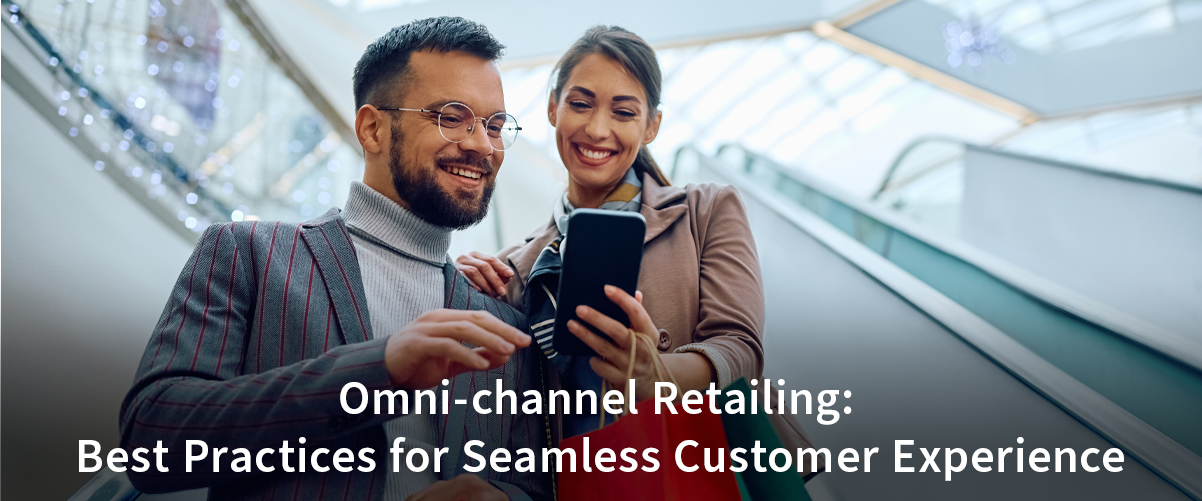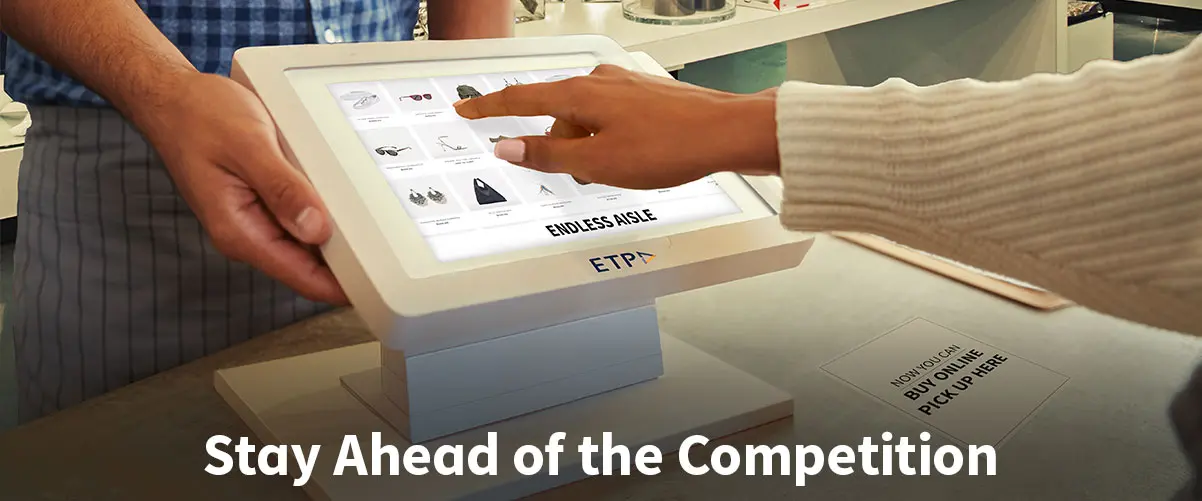
Today’s customers connect with brands in multiple ways. They move between social media and physical stores throughout their shopping experience. Your retail business needs a mobile POS system that delivers exceptional shopping experiences.
Many retailers face challenges with their point-of-sale solutions. They can’t keep up with modern omni-channel commerce needs. This leads to missed opportunities. Businesses lose out on sales that could come from quick digital experiences, efficient curbside pickup, and touchless checkout options. A POS system is a vital part of retail operations. Yet picking and maintaining the right solution for your retail business isn’t easy.
In this blog, we want to get into the red flags of a poor POS system. We’ll talk about how these limitations could stop your retail business from reaching its full potential.
Common Signs Your Mobile POS System is Underperforming
Retail businesses must recognise warning signs of a poor mobile POS system to stay ahead of competitors. Research shows that 80% of customers won’t wait longer than 5 minutes to check out. Speed at checkout can make or break customer loyalty.
- Extended wait times at checkout tell you something’s wrong. A good POS solution processes transactions in about 45 seconds. Your system might need attention if it keeps crashing or slowing down. Staff members who avoid using mobile devices or say they “sometimes do not work” point to bigger problems with the setup.
- Inventory discrepancies reveal deeper troubles. Your physical stock might not match what’s in your system. Experts call this “poor inventory synchronisation”. This mismatch creates stockouts or excess inventory that hurts your bottom line.
- System crashes hit hardest during busy hours. Your business suffers when the POS slows to a crawl or stops working. On top of that, it leaves a bad impression on customers. Your system should track inventory across locations. Without this feature, managing multiple stores becomes a nightmare.
- Transaction errors and payment issues suggest serious problems. Your mobile POS needs an upgrade if customers often see declined cards or network errors. The system should handle modern payment methods. Today’s shoppers expect these options.
- Live data access makes a huge difference. You need to know exactly where your inventory is. Without this certainty, you might oversell products and upset customers. Returns become harder to handle, and customer trust takes a hit.
- So these technical shortcomings affect the whole shopping experience. A transaction that should take seconds stretches into minutes. This delay puts you behind in today’s ever-changing retail world.
Technical Limitations Holding Back Your Retail POS Solution
Retailers using mobile POS systems face serious security risks today. Mobile devices that transmit and store financial data need robust information security—but many systems don’t deliver. A security breach can result in financial losses, damage your reputation, and create legal problems. Your business could face severe consequences if hackers steal customer information or payment card numbers from vulnerable POS systems.
- Inadequate systems create major compliance headaches. Mobile POS solutions that reach their end of service don’t get critical security updates. This leaves retailers exposed to new threats. Businesses that fail to meet industry standards like PCI DSS or GDPR risk heavy fines and legal action.
- The biggest problem comes from integration issues. POS Solutions often hit roadblocks because of different protocols, old architecture, or closed APIs. Your POS won’t work smoothly with inventory management or customer relationship tools without proper integration. Staff members waste time on manual data entry because of these disconnected processes and data mismatches.
- Network issues can cripple performance. Retailers struggle with unreliable connections in cloud-based mobile POS solutions. Customers get frustrated when systems go down mid-transaction. Large retailers can lose up to INR 421.90 million for each hour of downtime, according to an ITIC survey.
- Old hardware makes everything worse. A POS system typically lasts about five years. Consumer technology running POS software becomes outdated in just 18 to 36 months. The numbers tell the story—only 21% of retailers use POS software less than two years old. More than 40% still rely on systems older than five years. These technical problems go beyond simple inconveniences. They hurt your profits and shake customer confidence.
How Poor Mobile POS Implementation Affects Customer Experience
About 60% of shoppers leave their purchases behind because of long lines or bad service. This shows how mobile POS systems directly affect customer satisfaction. The problems with poorly set up systems go way beyond simple technical issues.
Customers hate waiting in long checkout lines. Research proves they abandon their carts if checkout takes more than 5 minutes. Ineffective mobile POS software can make transactions 30% slower. Target learned this lesson the hard way when they lost INR 4219.02 million in sales during a major POS system breakdown.
Failed transactions make customers lose trust quickly. Technical problems like declined cards or network errors frustrate customers immediately. Price differences between stores and online channels make things worse. Numbers tell the story – 73.1% of shopping carts sit empty because of inconsistent pricing. Customers don’t hesitate to switch brands when they find better prices elsewhere – 61% make the switch.
These bad experiences create bigger business problems:
- Customer loyalty drops (satisfaction scores fall 20% with slow systems)
- More customers walk away (44% give up when checkout takes too long)
- Sales suffer (good mobile POS software speed up checkout by 50%, reducing lost sales)
The right mobile POS system can cut transaction times by 30%. Staff can process payments anywhere in the store. This naturally shortens lines and makes contactless payments easier.
Slow or unresponsive systems create problems beyond customer frustration. Staff struggle when they can’t check inventory or process payments smoothly. The shopping experience suffers, and this affects your brand’s reputation and profits.
Why ETP V5 is the Game-Changer Your Retail Business Needs in a Mobile POS
ETP V5 can be the perfect answer to your mobile POS challenges. With robust omni-channel capabilities, it seamlessly connects inventory, transactions, and customer data across locations, giving you real-time insights and operational efficiency. Its advanced payment options and faster checkout features enhance the shopping experience, reducing cart abandonment and increasing customer satisfaction. Built with top-notch security measures, ETP V5 protects your business from risks while ensuring compliance with global standards. By investing in ETP V5, you’re equipping your retail business with a future-ready POS software that delivers unmatched speed, reliability, and convenience—helping you stand out in the competitive retail landscape.
Conclusion
Mobile POS system failures create major risks for retail businesses. These issues affect everything from daily operations to customer loyalty over time. Technical limitations and poor implementation lead directly to lost sales, damaged customer relationships, and missed growth opportunities.
Retail businesses should spot warning signs early instead of accepting these limitations. Transaction delays, inventory problems, and weak security just need quick action. Recent studies show that stores using modern, properly implemented POS software process checkouts 30% faster and keep customers a lot happier.
Future success relies on choosing mobile POS solutions that match today’s retail needs while staying ready for tomorrow. Modern systems should provide uninterrupted integration, reliable security features, and consistent performance across channels. They must also deliver the speed and convenience that today’s customers expect.
A properly working mobile POS system such as ETP V5 is truly a retail operation’s backbone. Setting up the right solution takes careful planning and investment. But letting customers switch to competitors with better systems will get pricey quickly.










